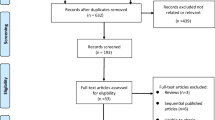Summary
Total knee arthroplasty consistently provides favorable outcomes of reduced pain, improved function, and enhanced quality of life for arthritic patients. Although the technical aspects of the operative procedure contribute greatly to the outcome, perioperative rehabilitation remains an important adjunct. Successful rehabilitation involves the collaborative efforts of the surgeon, physical therapist, nursing staff, and patient. Rehabilitation protocols should be specific to reduce ambiguity, yet flexible to accommodate differences in patient characteristics. Critical pathways have been designed to move patients through acute care in a more rapid manner, and in most cases they rely on subacute care facilities to complete patient rehabilitation. This has led to a significant increase in the use of extended care, rehabilitation, and transitional care facilities in order to reduce length of stay and cost while still optimizing the functional outcome after total knee arthroplasty.
Access this chapter
Tax calculation will be finalised at checkout
Purchases are for personal use only
Preview
Unable to display preview. Download preview PDF.
Similar content being viewed by others
References
Colwell CW, Morris BA (1992) The influence of continuous passive motion on the results of total knee arthroplasty. Clin Orthop 276:225–228
Coutts RD, Borden LS, Bryan RS, et al (1983) The effect of continuous passive motion on total knee rehabilitation. Orthop Trans 7:535–536
Coutts RD, Kaita J, Barr R, et al (1982) The role of continuous passive motion in the postoperative rehabilitation of the total knee patient. Orthop Trans 6:277–278
Daluga D, Lombardi AV, Mallory TH, Vaughn BK (1991) Knee manipulation following total knee arthroplasty. J Arthroplasty 6:119–128
Johnson DP (1990) The effect of continuous passive motion on woundhealing and joint mobility after knee arthroplasty. J Bone Joint Surg [Am] 72:421–426
Kumar PJ, McPherson EJ, Dorr LD, et al (1996) Rehabilitation after total knee arthroplasty. Clin Orthop 331:93–101
Lotke PA, Faralli VJ, Orenstein EM, Ecker ML (1991) Blood loss after total knee replacement. Effects of tourniquet release and continuous passive motion. J Bone Joint Surg [Am] 73:1037–1040
Lynch AF, Bourne RB, Rorabeck CH, et al (1988) Deep-vein thrombosis and continuous passive motion after total knee arthroplasty. J Bone Joint Surg [Am] 70:11–14
Lynch JA, Baker PL, Polly RE, et al (1990) Mechanical measures in the prophylaxis of postoperative thromboembolism in total knee arthroplasty. Clin Orthop 220:24–29
Maloney WJ, Schurman DJ, Hangen D, et al (1990) The influence of continuous passive motion on outcome in total knee arthroplasty. Clin Orthop 256:162–168
Mauerhan DR, Mokris JG, Ly A, Kiebzak GM (1998) Relationship between length of stay and manipulation rate after total knee arthroplasty. J Arthroplasty 13:896–900
McInnes J, Larson MG, Daltroy LH, et al (1992) A controlled evaluation of continuous passive motion in patients undergoing total knee arthroplasty. JAMA 268:1423–1428
Montgomery F, Eliasson M (1996) Continuous passive motion compared to active physical therapy after knee arthroplasty. Acta Orthop Scand 67:7–9
Nielsen PT, Rechnagel K, Nielsen SE (1988) No effect of continuous passive motion after arthroplasty of the knee. Acta Orthop Scand 59:580–581
Pope RO, Corcoran S, McCaul K, Howie DW (1997) Continuous passive motion after primary total knee arthroplasty. Does it offer any benefits? J Bone Joint Surg [Br] 79:914–917
Ritter MA, Gandolf VS, Holston KS (1989) Continuous passive motion versus physical therapy in total knee arthroplasty. Clin Orthop 244:239–243
Rodgers JA, Garvin KL, Walker CW, et al (1998) Preoperative physical therapy in primary total knee arthroplasty. J Arthroplasty 13:414–421
Romness DW, Rand JA (1988) The role of continuous passive motion following total knee arthroplasty. Clin Orthop 226: 34–37
Rorabeck CH (1999) Continuous passive motion is a useful postoperative tool. Orthopedics 22:392
Salter RB, Simmonds DF, Malcolm BW, et al (1980) The biological effect of continuous passive motion on the healing of full-thickness defects in articular cartilage. J Bone Joint Surg [Am] 62:1232–1251
Ververeli PA, Sutton DC, Hearn SL, et al (1995) Continuous passive motion after total knee arthroplasty. Analysis of cost and benefits. Clin Orthop 321:208–215
Vince KG, Kelly MA, Beck J, Insall JN (1987) Continuous passive motion after total knee arthroplasty. J Arthroplasty 2:281–284
Walsh M, Woodhouse L, Thomas S, Finch E (1998) Physical impairments and functional limitations: a comparison of individuals 1 year after total knee arthroplasty with control subjects. Phys Ther 78:248–258
Worland RL, Arredondo J, Angles F, et al (1998) Home continuous passive motion machine versus professional physical therapy following total knee replacement. J Arthroplasty 13:784–787
Yashar AA, Venn-Watson E, Welsh T, et al (1997) Continuous passive motion with accelerated flexion after total knee arthroplasty. Clin Orthop 345:38–43
Editor information
Editors and Affiliations
Rights and permissions
Copyright information
© 2005 Springer Medizin Verlag Heidelberg
About this chapter
Cite this chapter
Hernigou, P., Poignard, A., Nogier, A. (2005). Rehabilitation Following Total Knee Arthroplasty. In: Bellemans, J., Ries, M.D., Victor, J.M. (eds) Total Knee Arthroplasty. Springer, Berlin, Heidelberg. https://doi.org/10.1007/3-540-27658-0_62
Download citation
DOI: https://doi.org/10.1007/3-540-27658-0_62
Publisher Name: Springer, Berlin, Heidelberg
Print ISBN: 978-3-540-20242-4
Online ISBN: 978-3-540-27658-6
eBook Packages: MedicineMedicine (R0)



